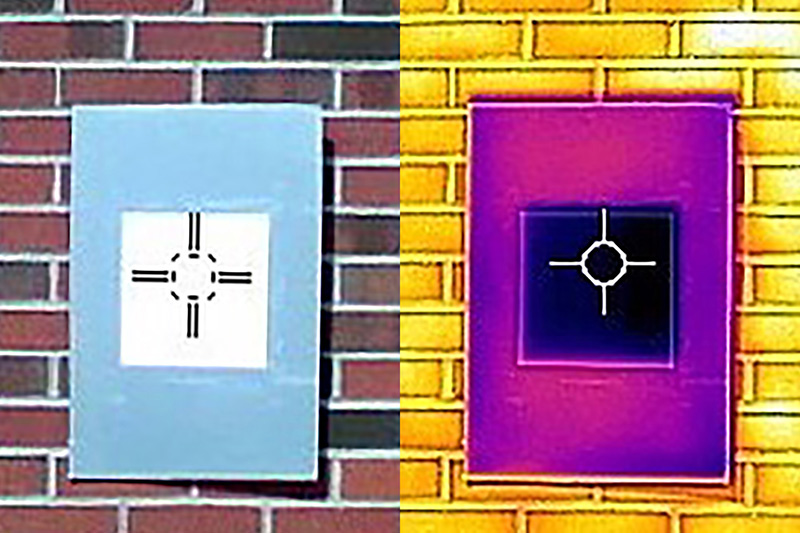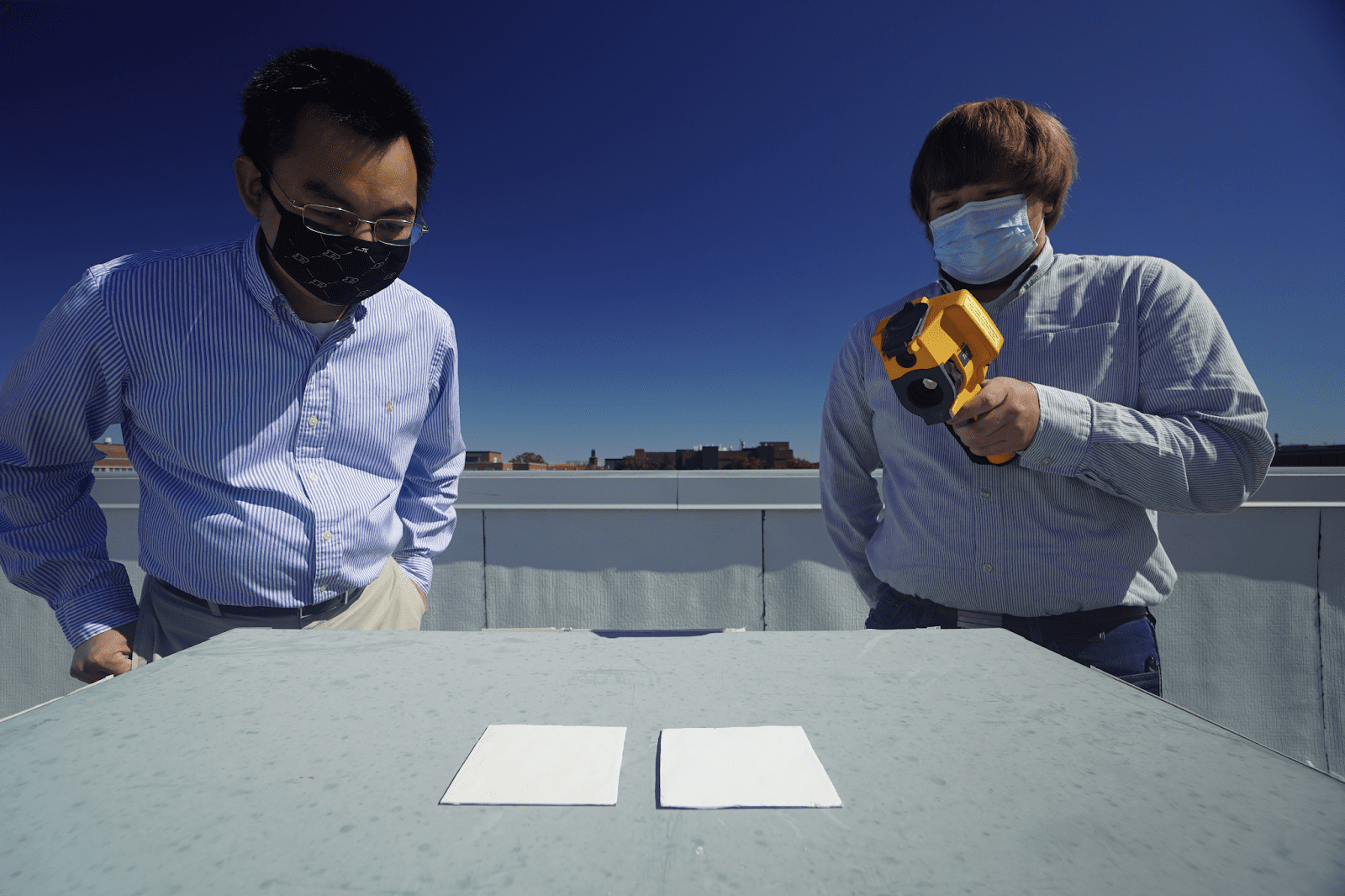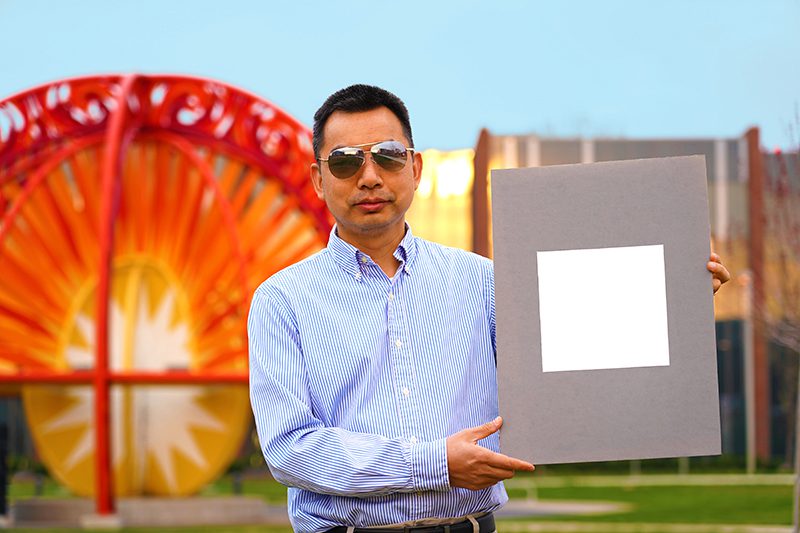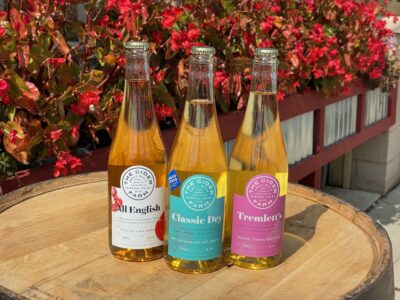New Ultra-White Paint Provides An Energy-Saving Innovation For Your Home
For many homeowners, paint color is merely an aesthetic decision. But what if it could also have a positive impact on your carbon footprint? Earlier this year, engineers at Purdue University produced the world’s-whitest paint; an energy-saving innovation designed to be an energy-free coolant for homes and buildings. The project, run by mechanical engineering professor Xiulin Ruan, was based on a desire to develop something with a positive impact on the environment. “When we started this project about seven years ago, we had saving energy and fighting climate change in mind,” Ruan said. However, they weren’t even necessarily looking to create a new paint.
As Ruan mentioned, the paint, now a Guinness World Record holder, is the product of a seven-year-long research project on the practical uses of a scientific principle called radiative cooling. The principle is based on the idea that reflecting light and heat, often with white paint, can cause passive cooling, or cooling without the use of energy which has much less effect on the environment or your energy bill. While scientists have been tinkering with the idea since the 1970s, Purdue scientists took it to the next level.

The record-breaking paint reflects 98.1% of sunlight while absorbing less heat from the sun than it emits, raising the bar from the previous record of 95.5% which, incidentally, was set a year earlier by the same Purdue team.
In a typical commercial white paint, most retain more heat than they emit, and even the paints designed for energy efficiency only reflect between 80-90% of sunlight and don’t have any cooling properties. The Purdue paint, on the other hand, certainly does have cooling properties. In testing, they covered a 1,000 square foot roof with the new paint, and the results were astonishing. During peak sunlight hours, the paint kept surfaces 8 degrees cooler than ambient temperatures, and at night it was even more pronounced, displaying as much as a 19-degree temperature difference. According to the results, the paint exhibits the same cooling power as a 10-kilowatt air conditioning unit, which Ruan says is, “more powerful than the air conditioners used by most houses.”
In addition, its cooling properties are even effective in cold weather. In an outdoor test in the middle of winter, the paint managed to lower the temperature by 18 degrees from an ambient temperature of 43 degrees Fahrenheit.
The key to the paint’s groundbreaking cooling ability rests on two important features. The first is its chemical composition. During their research, Ruan and his team assessed over 100 different materials before landing on Barium Sulfate, a compound used to make photo paper and white cosmetics. Xiangyu Li, a postdoctoral researcher at the Massachusetts Institute of Technology and one of the Ph.D. students who worked on the project, explains the reason for the use of the compound, saying “We found that using barium sulfate, you can theoretically make things really, really reflective, which means that they’re really, really white.”

The other feature depends on the size of the particles in the paint. Since the size of barium sulfate particles varies greatly, its able to reflect a greater range of the light spectrum than a compound with homogeneous particle sizes. Joseph Peoples, a Ph.D. student in mechanical engineering, explains that “a high concentration of particles that are also different sizes gives the paint the broadest spectral scattering, which contributes to the highest reflectance.”
The challenge with this project was not just about making an ultra-reflective white paint, but also finding a way to make it usable in a practical setting. This required balancing the particle concentration so that it retains its ultra-reflective quality while ensuring that it is applicable. Li explains this, saying, “although a higher particle concentration is better for making something white, you can’t increase the concentration too much. The higher the concentration, the easier it is for the paint to break or peel off.” Thankfully, the paint was specifically designed to withstand the inclement outdoor weather conditions, just like any other commercial paint.
This leads us to the big question: will it be commercially available?
Unlike the controversy involving Vantablack – the world’s blackest synthetic material – and provocative modern artist Anish Kapoor, Ruan’s ultra-reflective paint is compatible with commercial paint manufacturing processes and is apparently being marketed by Purdue as of September of this year.
With applications ranging from small-scale energy efficiency in homes to protecting melting glaciers in remote regions of the arctic and antarctic, it’s an innovation that makes a big difference. In a global climate desperate for forward-thinking ideas, it’s clear that this small innovation has the potential to do a whole world of good.





